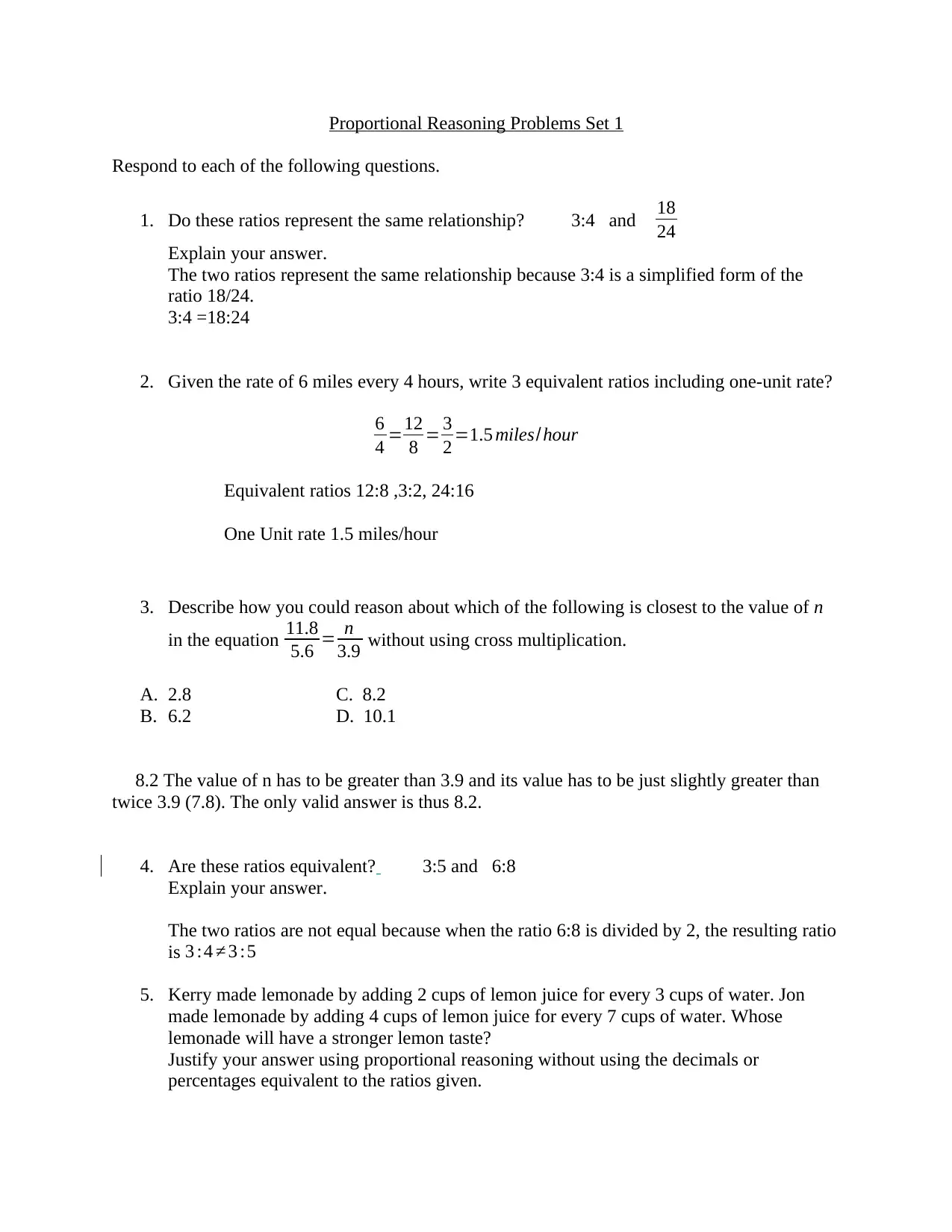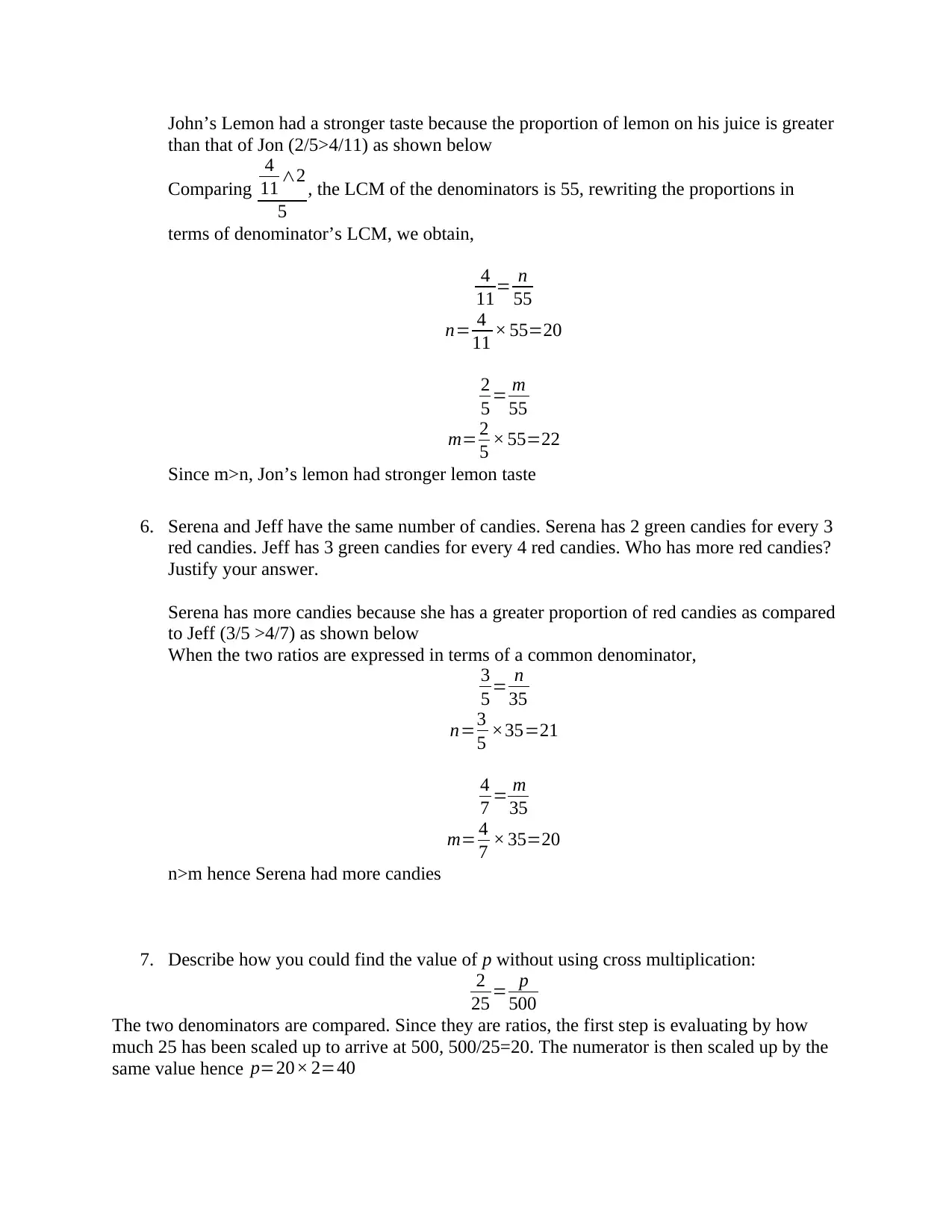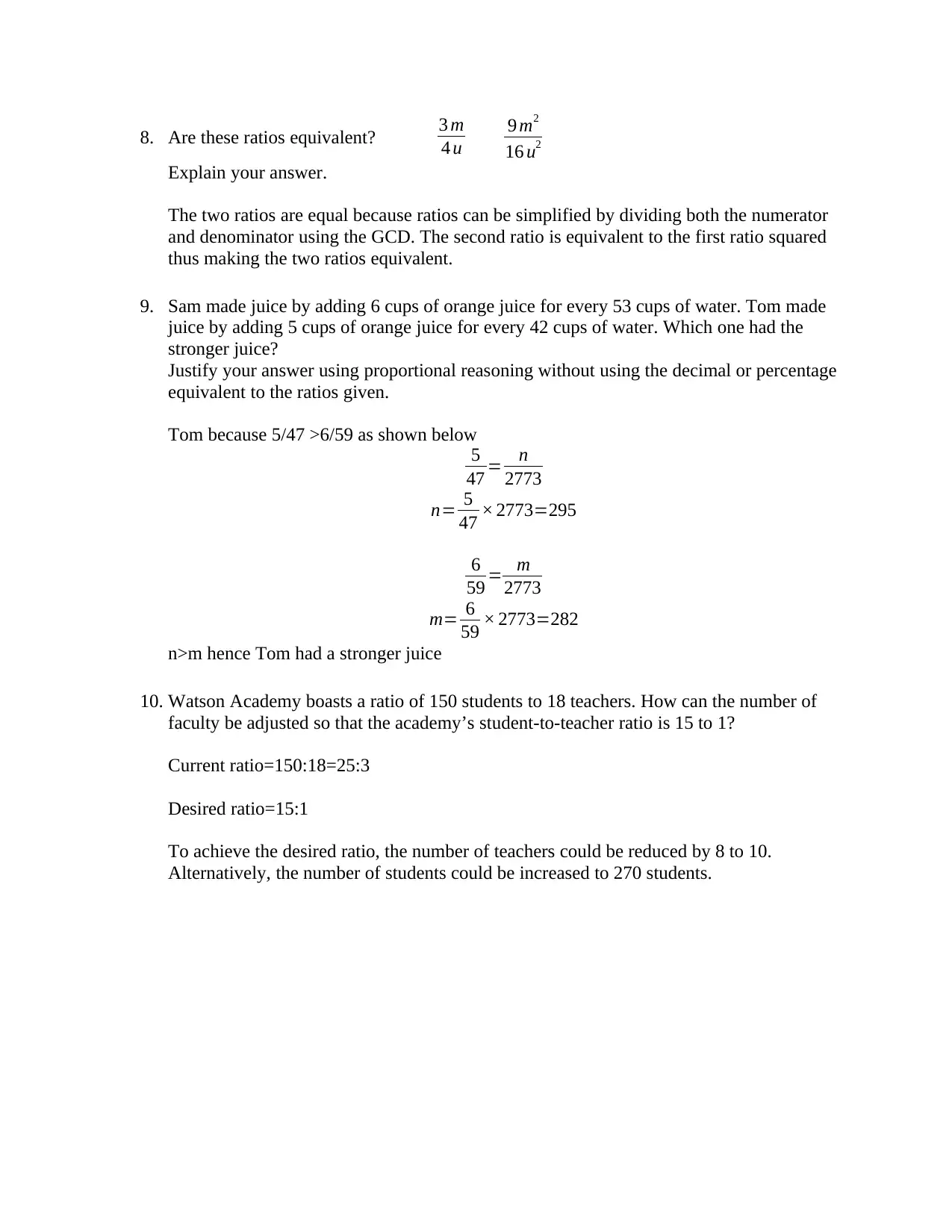Math Assignment: Proportional Reasoning Problems Set 1 Solutions
VerifiedAdded on 2023/04/10
|3
|678
|214
Homework Assignment
AI Summary
This document provides a comprehensive solution set for a proportional reasoning assignment. The solutions cover a range of problems including determining equivalent ratios, calculating unit rates, and solving for unknowns in proportional relationships. The assignment addresses questions that require students to reason about proportions, compare ratios to determine which is greater, and apply proportional reasoning to real-world scenarios such as lemonade and candy mixtures. The solutions provided demonstrate various methods for solving these problems, including simplifying ratios, finding common denominators, and scaling up ratios without using cross-multiplication. The document also includes explanations of the reasoning behind each step, making it a valuable resource for students studying proportional reasoning.
1 out of 3




![[object Object]](/_next/static/media/star-bottom.7253800d.svg)